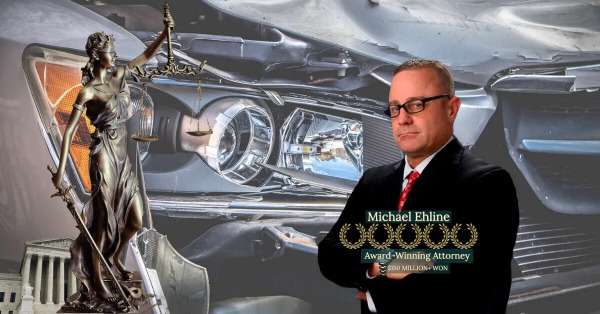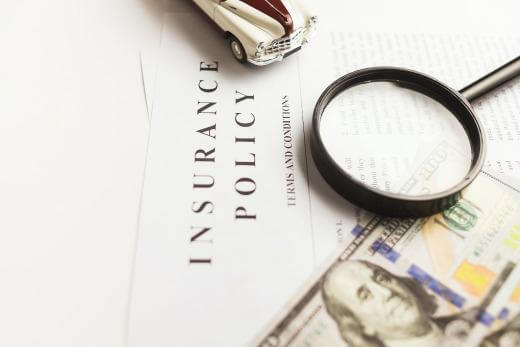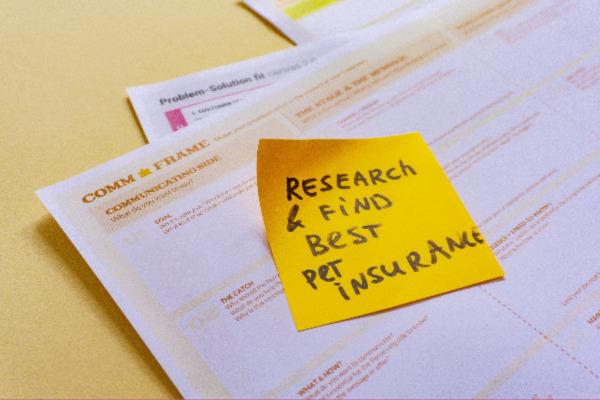Auto Accident Blog
Should I Immediately Call My Insurance Company After A Car Crash?
Should I Immediately Call My Insurance Company After A Car Crash?
Fraudulent California Auto Claims | Special Investigations Unit Blacklisted Attorneys
Fraudulent California Auto Claims
Will My Insurance Rates Go Up If I Get in A Car Accident?
What Are Some Reasons Auto Insurance Rates Go Up? A good idea would be to ignore scratches and dings and only file a claim for a catastrophic loss. Even if you remain claim-free for years and never skipped a payment, your insurer can still decline your renewal or refuse to upgrade your coverage after your policy expiration.
Safe Driving Tips
Whether alone in a car or accompanied by a passenger, driving safely is the number one concern for every driver while behind the wheel to avoid car accidents.

There are so many distractions while driving, such as texting, talking, and eating, that drivers need to learn and practice the basics of safe driving to drive responsibly.
This is behavior that could have been avoided. Every now and then, our personal injury attorneys receive a call from a distressed and injured victim of a car accident due to distracted driving. Although our attorneys are there to protect their rights and recover compensation for their loss, the grief and pain from the accident can last a long time.
Top 10 Safe Driving Tips
- Ignore Distractions
- Practice Defensive Driving
- Have a Safe Driving Plan
- Practice Safety
- Don’t Drink and Drive
- Drive the Speed Limit
- Seat Belt First
- Vehicle Maintenance
- Caution in Bad Weather
- Use the Three Second Rule.
Let’s examine each rule in detail with a short introduction. The National Highway Traffic Safety Administration (NHTSA) reported over 3,140 deaths and around 280,000 injuries due to distracted driving in 2019. Out of the 5.25 million car accidents in the United States, distracted driving contributes to about 920,000 accidents annually.
1. Ignore Distractions
With so many distractions coming right at you, as a driver, you must have your eyes on the road and ignore any distraction that comes your way. A driver has a duty of care to other drivers, riders, and pedestrians by taking reasonable care to avoid causing harm to another road user or damage to property.
There are many types of distracted driving, including visual, auditory, manual, and cognitive distracted driving.
By following these guidelines can make it easy for you to focus on the road at all times:
- Avoid multitasking.
- Have both hands on the steering wheel at all times.
- Avoid using your cell phone.
- Drive slowly, as speeding reduces reaction time.
Visual distractions force you to move your eyes off the road, including talking to a friend in the car or sending a text message on your cell phone.
Auditory distractions are sounds that divide your attention or completely shift it, including listening to music or speaking to someone.
Manual distractions happen when you take your hands off the wheel to do something else, like eat or drink.
Cognitive distractions are when you’re looking at the road, but your mind wanders, and this could be because you’re stressed about something or just too tired to drive.
A study released in 2006 showed that 80% of the accidents occurred due to distractions within three seconds of the event and the leading cause highlighted in the study was the use of a phone or drowsiness.
Today, 75% of teenage drivers agree to using their cell phones and sending at least one text message while behind the wheel. Leaving your eyes off the road not only puts you at risk. But others around you as well. You may find it difficult to avoid distractions.
2. Practice Defensive Driving
At times, it doesn’t matter how safe you’re driving because even if you’re driving within the speed limit and following the traffic laws, someone else might crash into you.
Defensive driving is all about picking up potential hazards and remaining cautious to avoid them. It is a skill that comes through practice and helps drivers defend themselves against vehicles, obstacles, and other drivers. Defensive driving combines safe driving practices with accident-preventing techniques. So, why should you practice defensive driving?
According to the NHTSA, more than 10,000 people die in car crashes yearly due to alcohol impairment, and there is one deadly drunk driving crash every 51 minutes in the United States.
25% of all car accidents involve the use of a cell phone, and the American Automobile Association (AAA) reports that 37% of all drivers have fallen asleep behind the wheel in their lifetime, and only 20% of the drowsy drivers pull over for rest breaks, while others continue driving.
The point of mentioning such grim statistics is to let you know the importance of defensive driving as you may be driving safely. Still, if you’re not practicing defensive driving, someone distracted, drunk, or drowsy might crash into you.
Here are a couple of defensive driving tips for you to practice while on the road:
- Be ready to react to the other drivers by seeing what they are doing.
- Stay extremely cautious while driving in poor weather conditions.
- Ensure a 2-second distance between you and the vehicle in front of you.
- Plan for the unexpected and avoid cell phone use.
3. Have a Safe Driving Plan
When you’re going around the block for a quick visit to the grocery store or picking your friend up for coffee, you don’t need to have a driving plan, but when you’re traveling interstate or long distances, it is crucial to have a safe driving plan in place. So, what does a safe driving plan include?
- Schedule your trip in advance by incorporating stops into it for breaks, eating, or phone calls.
- Make sure you adjust the mirrors, seats, the radio, and the climate control before setting off for your destination.
- Check your car’s wheels for any signs of air leaks or flats.
4. Practice Safety
You can practice safe driving, but not all drivers on the road will, putting you at risk of a collision or an accident. To prevent injuries in such situations, you must constantly practice safety measures and safe driving.
- Maintain a safe following distance behind other cars to avoid collision in case of the other driver steps on the emergency brakes.
- Ensure the cargo in the car is safely secured so that it doesn’t fly around and cause further damage during an accident.
- If you take a cab, make sure your driver is safe and lock your doors from the streets and potential carjackers.
5. Don’t Drive Drunk
According to the NHTSA, one-third of car accidents in the United States involve drunk drivers, and in 2019, there were more than 10,140 deaths due to drunk drivers. Every day, about 28 people die due to drunk driving.
Drinking alcohol impairs thinking by reducing brain function, and as alcohol levels rise, it negatively impacts the central nervous system. To measure alcohol, a device measures the weight of alcohol in a certain amount of blood, commonly referred to as BAC, or Blood Alcohol Content.
The United States considers 0.08 grams of alcohol per deciliter of blood dangerous as it increases the risk of crashes, and due to this, all 50 states have made it illegal to drive with a BAC of 0.08. Utah has taken this to the next level by making driving illegal if you have a BAC level of 0.05.
Even a single drink before driving can impair your skills and reduce your reaction time, making you more susceptible to mistakes and fatal crashes. In 2019, 1,775 people lost their lives in accidents where the drivers had BAC levels of between 0.01 and 0.07. The sad thing about all these numbers is that most drunk driving accidents in the United States are preventable if the involved drivers do not consume alcohol before driving.
6. Stay Within the Speed Limit
Speed thrills but kills is an old saying that has come back to haunt many drivers who get into accidents by speeding. At the start of the COVID-19 pandemic, many people remained indoors to stay safe, but there were young drivers overspeeding on empty roads, resulting in many accidents.
According to research conducted by ERSO, for every mile per hour you drive over the speed limit, the chances of getting into an accident increase by up to 5%. The NHTSA reported over 9,375 deaths due to speeding, and just under half of those people were not wearing seatbelts.
The NHTSA states that 26% of all traffic accidents have speeding as the main cause of the event. On average, 25 people die every day in the United States due to exceeding speed limits. After carefully studying the number of traffic accidents in the country, the results suggest that young drivers between the ages of 16 and 24 were speeding before the crash.
Speeding also greatly impacts the number of accidents depending on the type of surface the vehicle is speeding on. 16% of all accidents on dry roads are due to speeding. Now compare that to the 39% of accidents on snow or slushy roads and 40% of accidents on roads with moving water that is all attributed to speeding. There is a considerable difference, suggesting that speeding further increases the chances of accidents in poor driving conditions.
Next time you’re driving on a relatively straight highway with little to no traffic, avoid aggressive driving or the temptation to speed.
7. Seat Belt First
Many of us forget to wear a seat belt, only to fiddle with it later after remembering, so make it a habit to wear your seat belt as soon as you sit in your car. A seat belt increases a driver or passenger’s chances of survival in the event of a flip or rollover.
According to the NHTSA, in 2017, 15,000 people survived traffic crashes by having their seat belts properly buckled. During the same year, 2,549 deaths could have been feasibly prevented if the drivers had worn their seatbelts.
Here is how seat belts protect drivers and other passengers in the event of an accident:
- Buckling your seat belt helps you stay in place. If you’re not wearing a seat belt during a crash, you risk getting ejected from the vehicle, which can be deadly.
- You may want to believe that airbags are enough to protect you, but if you’re not strapped in, you risk receiving injuries or even dying from the impact of the airbag. Remember, airbags are commonly designed to work together with seat belts rather than replace them.
- By buckling your seat belt properly, you can reduce the risk of serious injuries from an accident by 45%.
If you don’t know how to buckle a seat belt properly, here are some instructions to follow:
- Place the shoulder belt across the middle of the chest. Make sure it is away from the neck.
- Avoid placing the shoulder belt under your arm, as it can cause serious internal injuries in the event of a crash.
- Place the lap belt across the hip. A common mistake that many people make is placing the lap belt on their stomach. This can put a lot of force on that region in the event of an accident.
8. Properly Maintain Your Vehicle
How can you prevent your tire from bursting and causing an accident? How can you ensure your brakes work when required to avoid a collision with another vehicle?
The best way to avoid any accidents due to a failing car is to ensure that you properly maintain your vehicle, so check the tires before you start driving and look out for the different symptoms of a failing brake, misfiring engine, and other vehicle anomalies.
9. Exert Extreme Caution During Bad Weather
We’d all like to believe that we have the driving skills to weather the storm, but that’s far from reality. Poor weather conditions affect visibility, and no matter how good of a driver you are, if you’re not able to see the road in front of you, you’re driving yourself into the unknown.
What’s surprising is that bad weather-related accidents kill more people annually than large-scale weather disasters such as tornados, hurricanes, and urban flooding.
The Department of Transportation (DoT) states that out of the 5.25 million annual accidents, 21% of these involve hazardous weather. Weather-related crashes in the country have killed over 5,370 people annually and caused another 418,000 injuries. The top contributors to weather-related accidents were wet pavement and rain.
Fog and blowing dust, or short bursts of heavy snowfall, can reduce visibility from good to just a few inches. On February 18, 2022, a winter storm in Illinois caused a massive 100-vehicle pileup on Interstate 39.
It is best to slow down when driving during bad weather, such as a storm, heavy downpour, strong winds, or intense fog.
10. Follow the Three-second Rule
The three-second rule means maintaining a three-second distance between your vehicle and the vehicle in front of you. Allow for more distance if driving in poor weather conditions or bad road conditions.
Winter Driving Tips
Although statistics suggest that more accidents occur during summers than during winters as people enjoy the pleasant weather, that doesn’t mean that you shouldn’t practice safe driving during winters. The accidents that occur during the winter have more severe consequences if the driver loses control of their vehicle.
Driving in winter poses many challenges, such as slippery roads and minimum to zero visibility during snowfall.
Here are some winter driving tips to help reduce the risk of an accident:
- Charge your cell phone before your drive so you can reach out for help before any mishap.
- Have a snow kit in your car at all times to help you remove snow or ice from your windows and windshield to improve visibility. A snow kit should include a scraper and a brush.
- During an accident, it can take a while before help arrives. It is best to have a first aid kit in the trunk of your car, some blankets, warm clothes, high-energy snacks, and a torch with extra batteries.
- To prevent the fuel line from freezing, top up your gas tank before you embark on your journey.
- Prior to your travels, inform someone close about your plans, the route you are taking, and what time you will reach your destination.
Tips for Driving in the Desert
More than 30% of North America spans arid drylands, including the four central deserts: the Great Basin, Mohave, Chihuahuan, and Sonoran. Deserts are hostile lands, and as the weather turns extreme, it can get very difficult to navigate due to low visibility. If you’re not careful, you could find yourself stranded in the middle of one due to an accident with other cars, animals, or obstacles.
Here are some tips for driving in the desert:
- Before your journey, inform someone about your plans and the route you’ll be taking.
- It is best to avoid driving in the desert during high temperatures, especially when they peak in the afternoon.
- Make sure to pack a lot of water bottles before the trip and remain hydrated during it.
- If your car starts to heat up, make a safe stop and roll down your windows. Crank up the car heater to draw the excess heat into the heater core. This will help the coolant reduce temperature, allowing you to return to the road again.
- Wear your seatbelt if you have a tire blowout and rollover to avoid a vehicle ejection.
- If your car breaks down, let others know you need help by keeping your hood raised. Do not travel on foot unless you know exactly where you are and how far the next town is.
We have covered some general safety tips and tips to increase a driver’s reaction time. Now let’s go over some tips to help you overcome road rage.
Road Rage Incidents: How to Avoid Them?
According to the AAA, the results were quite shocking after studying 10,000 road rage cases. There were more than 200 murders and over 12,000 injuries. The AAA stated that aggressive driving increases the risk of deadly accidents by 56%. Other factors further worsen a driver’s road rage. Safe driving tips or not, sometimes angry people do stupid things behind the steering wheel against other vehicles and pedestrians.
For example, a Harvard School of Public Health study revealed that drivers with guns in their cars are more likely to act aggressively behind the wheel. Aggressive driving and motorists with guns in their cars are a lethal combination that can have dire consequences.
Here are some guidelines laid out by the AAA to help drivers avoid road rage incidents with an aggressive driver and keep at least two seconds of cushion between vehicles. Experts recommend you stay out of any sizeable blind spot and keep your eyes moving.
1. Don’t Offend The Car Ahead or Others Behind You
You never know another person’s mental situation, especially when you mind your own business. However, your erratic actions on the road can bring some bottled feelings to the surface or cause other drivers to experience road rage. For example, driving slow or using cruise control in the fast lane. Cutting other cars off will ruffle some feathers of an oncoming car driver. You should yield to oncoming auto drivers and keep a safe distance. And don’t start tapping the brake pedal either, especially when followed by buses or larger vehicles like a big rig truck.
2. Never Engage
The last thing you want to do when driving is engage with an angry driver. Ensure sufficient space between your vehicle and the angry driver, and avoid making eye contact to de-escalate danger. You don’t want to take your eyes off the road, especially if the situation stresses you.
If the angry driver keeps pursuing you down the roadways, don’t panic; head to a crowded location and call the police. You must always stay in your car and honk the horn to attract attention from anyone near highways and commerce zones.
3. Don’t Take Actions Personally
You never know the world of trouble and stress another driver may be going through, so it is best not to let their actions affect you and your day. There could be many reasons they’re forced to drive like that, but that’s not for you to find out.
Try to practice deep breathing and, instead of listening to fast songs, switch to slower tracks to help you relax.
What to Do in the Event of an Accident?
Practicing safe driving tips can reduce the chances of an accident, but it doesn’t bring it down to zero. If you find yourself in an accident, you must react swiftly to protect yourself physically and financially.
Here are some guidelines and safe driving tips that you should follow in the event of an accident.
1. Move Your Car
Check to ensure everyone in the car, including you, is doing okay. If there is anyone requiring emergency help, call 911. Once you’ve alerted the authorities of the situation, move your car to a safe spot, away from the road traffic, to avoid further collisions.
2. Stay on the Scene
Make sure you remain at the scene of the accident to report the incident to police officers when they arrive. If the other driver is there, too, you can talk to them and exchange contact information, insurance details, and vehicle information. You will need this if you pursue a claim against their insurance company. These are just some common sense safe driving tips.
Any witnesses nearby greatly help the personal injury case, so try to take down their contact details. When the police arrive, stick to the facts and do not overexplain, as you’ll end up hurting your case with unnecessary information.
3. Undergo Medical Examination
If you’re injured, head to a nearby hospital immediately for treatment. If you feel fine, visiting the hospital for a medical examination is still essential, as some injuries can take time to surface. Keep all the medical reports and bills with you, as you will need them when filing a personal injury claim.
Contact the Insurance Company
You have to inform your insurance company about the accident and the negligent driver’s insurance company, as they will guide you through filing a claim and the documents needed.
Reach Out to a Personal Injury Attorney for More Safe Driving Tips
You might be eligible for compensation if you’re injured in an accident that was not your fault. Insurance companies are notorious for rejecting claims or lowballing settlement offers. And without the help of an attorney, you may find yourself in hot water. A personal injury lawyer can help protect your rights and get you the compensation you deserve.
In California, the statute of limitations provides two years following the date of the accident for all injured victims to pursue claims or legal action against the negligent party. Two years may seem like a long time, but the constant back and forth with the insurance company can take a long time. If you’ve received injuries in an accident due to someone else’s negligence, contact us for more safe driving tips at (213) 596 9642 for a free consultation with our expert personal injury lawyers today.Read More »Safe Driving Tips
4 Free Apps that Incentivize Driving Safely
The risks of distracted driving have been fully established by now. Phone usage while driving takes your eyes off the road for five seconds on average.
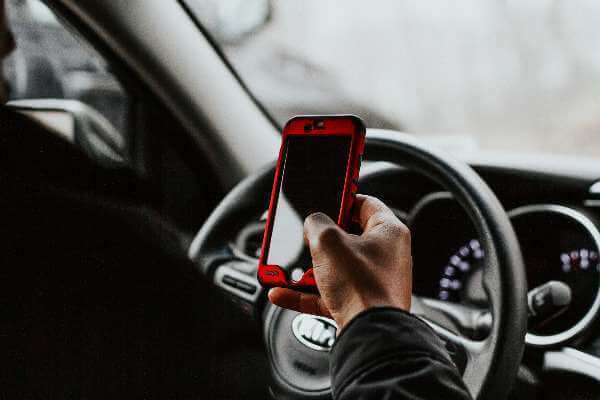
If you notice a terrible habit of texting while driving, you can use a driving safety app to help you break it.
This is behavior that could have been avoided. It increases your crash risk by 23 times. This can have deadly consequences, particularly for younger generations of drivers, with drivers in their 20s representing 38% of distracted drivers in fatal crashes. According to the National Highway Traffic Safety Administration, distracted driving claimed the lives of 2,841 people in 2018. One thousand seven hundred thirty drivers, 400 pedestrians, 605 passengers, and 77 bikers were killed. Furthermore, an estimated 400,000 people were wounded due to distracted driving.
Distracted Driving in the United States
Any activity that diverts a driver’s attention from the road falls under the category of “distracted driving.” This could include texting, calling someone from your phone, fiddling with the stereo system, eating while behind the wheel, and so on. Removing your eyes from the road for a bit is more dangerous than you think. A five-second distraction in a vehicle traveling at 55 mph is like covering the distance of an entire football field with your eyes closed.
According to the CDC, more than 400,000 individuals received injuries from distracted driving crashes in 2018. The statistics show that more than 26,000 people died from accidents involving distracted drivers from 2012 to 2019.
Since 2007, reports suggest that more young drivers, aged between 16 and 24 years old, are at a higher risk of a distracted driving crash than any other group. A major cause of this is that young people cannot resist the temptation of using their smartphones while on the go.
New car technology, such as automated shifting, comes with increased responsibility. Although automatic shifting eliminates a driving task, it allows drivers to fill up their free time with distractions.
How to Avoid Distracted Driving?
To help prevent distracted driving, here are some tips to follow:
- Avoid using your cellphone: While driving, only emergencies should warrant using a cell phone. Avoid using your phone while behind the wheel, but you should consider pulling over first if it is essential.
- Do not drive while sleepy: Falling asleep while driving is more common than you think. With long US highways that can get monotonous, drivers are at a higher risk of falling asleep. A government study suggested that over 37% of US citizens have fallen asleep at least once while behind the wheel.
- Reduce activity inside the car: At times, you might feel that there is too much distraction in your car, either because there are too many people or because the level of activity inside the car is high. Novice drivers may be easily distracted if they have many friends accompanying them.
- Avoid eating: When driving, you must exert extreme caution on the road and consider audio and visual signs. Eating a donut and sipping coffee before work sounds fantastic, but it can cause serious distractions, which can lead to accidents.
A distracted driver is a danger to themselves and the people and vehicles around them. A distracted driver is also considered negligent since they had a duty of care and breached that duty by giving in to distraction.
We’ve all heard of texting, calling, and setting the stereo system up causing distractions, but recently, a new type of distraction on US roads has been on the rise, and these are the three-wheeled vehicles from the 70s and 80s.
Introduction of Three-wheeled Vehicles
Three-wheeled vehicles came with a bang just after World War II. A struggling economy and an auto manufacturer’s lack of supply welcomed budget-friendly, compact three-wheeled vehicles into the US market. Fitted with small engines and a chassis made from cheap metal, three-wheeled vehicles made transportation affordable for low-income groups in the country.
Even 007 had a three-wheeler ride in the 1971 action/spy movie “Diamonds are Forever.” By the 1980s, more than 2 million sales were in the United States. However, these types of vehicles have slowly diminished over the years.
Fast forward to today, and these vehicles are now seen as collector’s items, adored for their unique designs and rarity. More three-wheeled vehicles are displayed at showrooms and car exhibitions than in people’s garages. However, that might change as auto manufacturers such as Elio and Polaris try making these three-wheelers the norm on US highways.
Some of these three-wheelers may look like motorcycles, while others resemble something of a car. Perhaps this is why there is a lot of confusion regarding these types of vehicles, whether they are considered cars, and the type of insurance required to drive them legally on US roads.
Are Three-wheeled Vehicles Considered Cars?
According to federal law, a “motorcar” is any vehicle with four wheels, and any less than that would constitute a “motorcycle.” A three-wheeled vehicle is, by law, a motorcycle, and all the rules and regulations for riding a motorcycle apply to these types of vehicles.
Although three-wheeled vehicles have a steering wheel, passenger seats, and even an enclosed cab, they are still classified as motorcycles. Owners of such vehicles must register them as motorcycles, obtain a motorcycle license, and follow traffic and safety rules applicable to motorcyclists.
Is There Any Risk In Riding Three-wheeled Vehicles?
Unlike cars, three-wheeled vehicles are susceptible to certain risks that can cause serious injuries to drivers and even death in fatal crashes. During an accident, the majority of three-wheeled vehicles do not have roll bars to protect the driver.
These vehicles also have a lean profile and are much lower than standard cars, making them difficult to see by other drivers. If you’re used to driving standard cars, shifting to a three-wheeled vehicle can pose risks due to the difference in handling. The combination of handling, weight, and speed makes these types of vehicles more prone to flipping or rolling over during collisions and hard turns.
The lack of a ruling on the newly introduced legislation requiring three-wheeled vehicles to comply with car safety regulations and meet crash standards has led some states to adopt their own laws regarding these types of vehicles.
Before you consider driving these types of vehicles on the road, it is important to have enough driving experience and familiarize yourself with the vehicle’s handling.
The Sun Valley Crash
On March 30, 2017, a Los Angeles Sun Valley crash involved two three-wheelers. The vehicles were traveling alongside each other when one veered and lost complete control of the vehicle, colliding with the street, a parked vehicle, and a fire hydrant.
As soon as the local police officers arrived at the scene of the accident, it was too late. One of the riders did not survive the accident’s impact, while the other had minor injuries and cooperated with the law enforcement authorities.
Although it is still not revealed whether the rider had their helmet on while riding, three-wheelers are more dangerous than you think.
Do You Require Insurance to Drive Three-wheelers?
Just like how motorcyclists buy motorcycle insurance, the same applies to owners of three-wheelers since these vehicles are also considered motorcycles. The Insurance Information Institute (III) states that minimum liability insurance is required to protect yourself and your financial assets in the event of an accident that causes injuries to the other driver.
In California, a motorcyclist must have a minimum insurance amount of:
- $15,000 for injuries or death for a single person.
- $30,000 for injuries or death per accident.
- $5,000 property damage coverage.
So if you own a three-wheeled vehicle in California, you must purchase the recommended minimum liability insurance for the state to legally ride your vehicle on the road.
Consequences of an Accident with a Three-wheeler
Those riding a three-wheeler are more at risk of injuries during an accident than those driving a standard car. This is because a three-wheeler does not have the necessary protection and also lacks size. However, that does not mean that a three-wheeler is not capable of causing injuries to you. These could include spinal injuries, traumatic brain injuries, and even wrongful death.
If you received injuries due to an accident with a three-wheeler, your best bet would be to contact an attorney specializing in motorcycle accidents. Our California motorcycle accident attorneys have over a decade of experience handling injured victim cases, protecting their rights, and negotiating a fair settlement. Contact us at (213) 596-9642 for a free consultation!
Abdomen And Pelvic Pain After My Car Accident
Are You Experiencing Abdominal Injuries Sustained in a Car Accident?

Suppose you develop abdominal pain after vehicular accidents. What if it’s a catastrophic injury? In that case, you need proper treatment to ensure you can recover quickly – it’s a severe condition, so read on to find out more, and make sure you hire the best lawyers to help you with the process!
Ehline Law Wants to Talk to You
What Is a Pelvic or Abdominal Injury?
Abdominal injuries are internal injuries you might have after car accidents – they are very complex, dangerous, and could cause severe complications if you don’t get medical help.
Your internal organs need to be healthy. Otherwise, your body cannot function properly; accident victims often have delayed symptoms, which might transform into severe injuries such as internal organ injuries, traumatic appendicitis, pelvic injuries, broken bones, and much more.
Having an internal injury is a life-threatening situation because your abdominal organs might fail if you don’t get medical attention right away; therefore, even the slightest pain is a symptom you need to keep in mind if you don’t want long-term issues.
Types of Injuries and Symptoms
There are two types of serious injuries you may experience in your abdominal muscles, and they don’t include any traumatic brain injury you could have gotten in the car accident, so take a look at everything you should know:
Injuries by Blunt Force
If you’re in a car accident and an object hits your skin but does not penetrate it, it means you have a blunt force injury – that can happen, for example, when the airbag, steering wheel, or any other vehicle parts hit your body.
Penetrating Injuries
Internal bleeding is often a result of penetrating injuries, which are the ones that break the skin, and it’s very serious – injuries like that are the most complicated wounds since they can cause organ damage, which is why getting medical treatment is vital.
At the same time, on some occasions, you may not develop pain after a car accident since some abdominal injuries or pelvic injuries take longer to appear, so evaluate if you’re experiencing severe pain or other indicators.
Get to a doctor right away if:
- Severe pain exists
- Lower abdominal pain
- Abdominal bruising.
Symptoms of internal bleeding:
- Abdominal cramps
- Pelvic fracture or other fractures
- Abdominal tenderness
- Blood pressure changes
- Ruptured spleen
- Dizziness, nausea, and vomiting
- Swelling or inflammation
- Discomfort
- Difficulty standing
- Constipation or urine changes.
What to Do if You Experience Abdominal Pain, Stomach Pain, or Think You Might Have Internal Bleeding
The first thing you have to do if you have abdominal pain after a car accident is to seek medical attention immediately; therefore, the doctor might determine if you suffered from blunt force trauma, and they might aid you if you’re in extreme pain.
Once you ensure you’re not at risk, you can ask for legal advice – don’t wait any longer, and stop looking for “wrongful death lawyers near you” because the best experienced, and most aggressive Los Angeles wrongful death attorney is ready to help you: Michael Ehline.
At Ehline Law Firm, we believe the attorney-client relationship is essential, especially if you’re filing an injury claim, since auto accidents can cause a lot of problems, so in many cases, victims are suffering, they’re in pain, and all they want is to find a civil lawyer nearby who can help them.
If the driver was negligent and there is enough evidence for the lawyer to prove there was a breach of duty, then fear not – the personal injury lawyers at Ehline Law Firm can aggressively fight for your case and ensure you get compensation for your medical expenses. Call now at (213) 596-9642!
Why Ehline Law Firm?
There are different law firms available, but all the lawyers at Ehline Law Firm have years of experience with auto accident cases; additionally, you get a free consultation and can ask all your questions about your car crash.
We understand you have to seek legal counsel from the best people, which is why we know Michael Ehline is the right attorney. Since he was a US Marine, he has a rigid sense of honor, and as a self-taught lawyer, he has the knowledge and experience to help you.
Furthermore, the firm has won awards and often receives positive reviews from clients like you – people who want justice for their physical trauma.
You can get a free consultation with Michael Ehline and start your legal process today – a car accident can cause acute stomach pain, seat belt syndrome, and much more, so don’t hesitate and call now!
Fire Risk Recall on BMW Electric Vehicles
BMW Issues Warning- Park These EVs Outside and Don’t Drive!
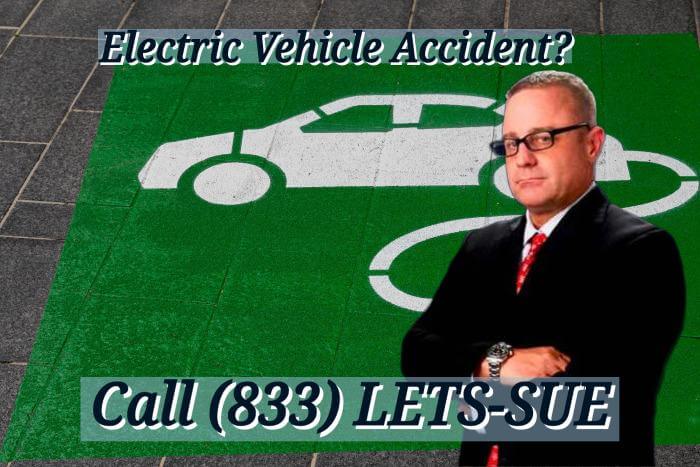
Ultimate Guide to Understanding BMW EV Accidents. Well-known German manufacturer BMW issued a warning statement and recall notice on some luxury electric vehicles produced by the company over the last year.
The iconic luxury carmaker wrote that the high voltage battery used in some of the electric cars built from November 2021 to June 2022 might not be in line with specifications and informed owners that a voluntary recall is required.
The National Highway Traffic Safety Administration posted the notice to the campaign database on July 27th, advising owners to contact BMW customer service as soon as possible, stating that the electric vehicle battery defects could be at risk of sparking and catching fire.
Defective Electric Cars to Receive a Free High Voltage Battery Replacement
All affected BMW-manufactured electric vehicles are to have their battery cells replaced with an approved battery pack. The company advised vehicle owners to keep their cars parked outdoors and away from buildings and to avoid driving until repairs are completed and approved.
Issues with Battery Cell Production Could Cause the Car to Catch Fire
According to the automobile manufacturer, the risk results from possible cathode plate damage during the production of the battery cells (details listed in the defect description section of the report).
What Caused the Defect?
A damaged plate may have led to debris entering the battery cell, creating the potential for a short circuit that could catch fire.
The potentially affected models and recalled vehicles include the BMW iX M60, i4 M50, iX Drive 50, and the 2022 eDrive40.
BMW became aware of a possible issue when an iX M60 had an incident overseas. The company estimated how many models could have the defect based on (v)ehicle manufacturing information and supplier production records, which suggest 83 units.
The Dangers and Difficulties of Car Battery-Related Fires
It can be extremely difficult to locate and control fires caused by a battery. Electric vehicles can quickly be overcome by fast-spreading flames caused by an electrical short circuit or spark.
Lithium-ion battery cells and high-voltage electric batteries can both trigger issues if not properly manufactured. Lithium-ion batteries are commonly used in electric vehicles by BMW, General Motors, and other leading brands.
Other Incidents with Electric Car Batteries
Earlier this year, an electric Jaguar i-Pace caught fire inside a garage. The Florida man’s house was only saved because the car’s owner managed to spot the smoking vehicle and get it out into the open before flames spurted from the car- eventually destroying it completely.
Luckily, the local fire department poured a special foam fire suppressant to control the situation and combat further combustion of flammable liquid, but the car owner reported a humming sound coming from the engine for quite some time afterward.
There have also been reports of more than one incident relating to a Tesla Model. As owners sept, their Tesla that was left to charge overnight caught fire, engulfing their garage. Firefighters were able to manage the fire with the help of six firetrucks.
Final Thoughts on the BMW Recall Report
People buy electric cars to save time and money and protect the environment. Modern technology used by automakers is impressive and beneficial, but nobody expected it to be dangerous.
Notification letters and phone calls are being arranged to any buyers of the affected models the luxury automobile manufacturer built during the impacted time frame.
Actions Required
Instructions are as follows:
- Respond to the NHTSA recalls.
- Stop driving until all risks have been assessed.
- Owners should park their vehicles outside and away from buildings.
- Avoid charging until a response comes from the carmaker.
- Contact a local BWM dealer to arrange a battery pack replacement (dealers will provide this service free of charge).
Contact Ehline Law for Any Vehicle-Related Injury Claims or Concerns
Speak to an expert in personal injury law about any manufacture-related claims. Ehline Law is a leading authority in Los Angeles and is ready to fight your case.
